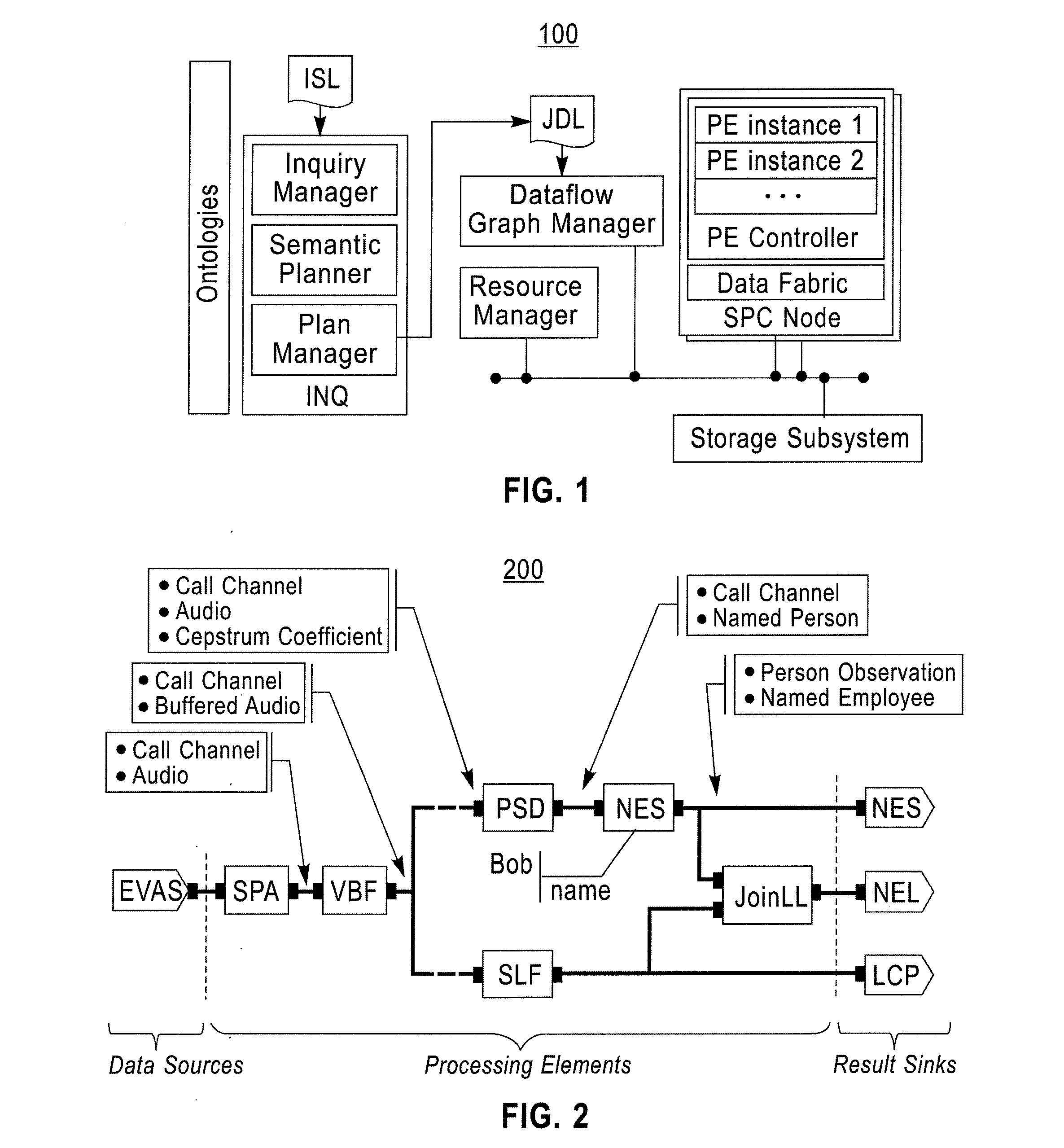Method for semantic modeling of stream processing components to enable automatic application composition
- Summary
- Abstract
- Description
- Claims
- Application Information
AI Technical Summary
Problems solved by technology
Method used
Image
Examples
application example
[0052]We illustrate the main underlying idea of INQ by an example. Assume that in a company called Enterprise Global Services (EGS), the System S 100 is connected to a private VoIPbased telephone network. Following a customary business practice, all callers to EGS phones are warned that the calls may be monitored to ensure quality service. Thanks to VoIP, employees of EGS can travel, and take calls anywhere they can find an Internet connection. The person whose job it is to monitor the quality of service, may be interested in calls made by a specific employee or in location of that employee. These questions can be answered by a stream processing application 200 schematically shown in FIG. 2.
[0053]In FIG. 2, a single SourcePE (EVAS) is connected to EGS VoIP network, and streams out VoIP packets, packaging them as SDOs. A number of PEs process the information, and eventually output three result streams via corresponding SinkPE. NES sink produces alerts when employee Bob makes a call, ...
PUM
 Login to View More
Login to View More Abstract
Description
Claims
Application Information
 Login to View More
Login to View More - R&D
- Intellectual Property
- Life Sciences
- Materials
- Tech Scout
- Unparalleled Data Quality
- Higher Quality Content
- 60% Fewer Hallucinations
Browse by: Latest US Patents, China's latest patents, Technical Efficacy Thesaurus, Application Domain, Technology Topic, Popular Technical Reports.
© 2025 PatSnap. All rights reserved.Legal|Privacy policy|Modern Slavery Act Transparency Statement|Sitemap|About US| Contact US: help@patsnap.com



